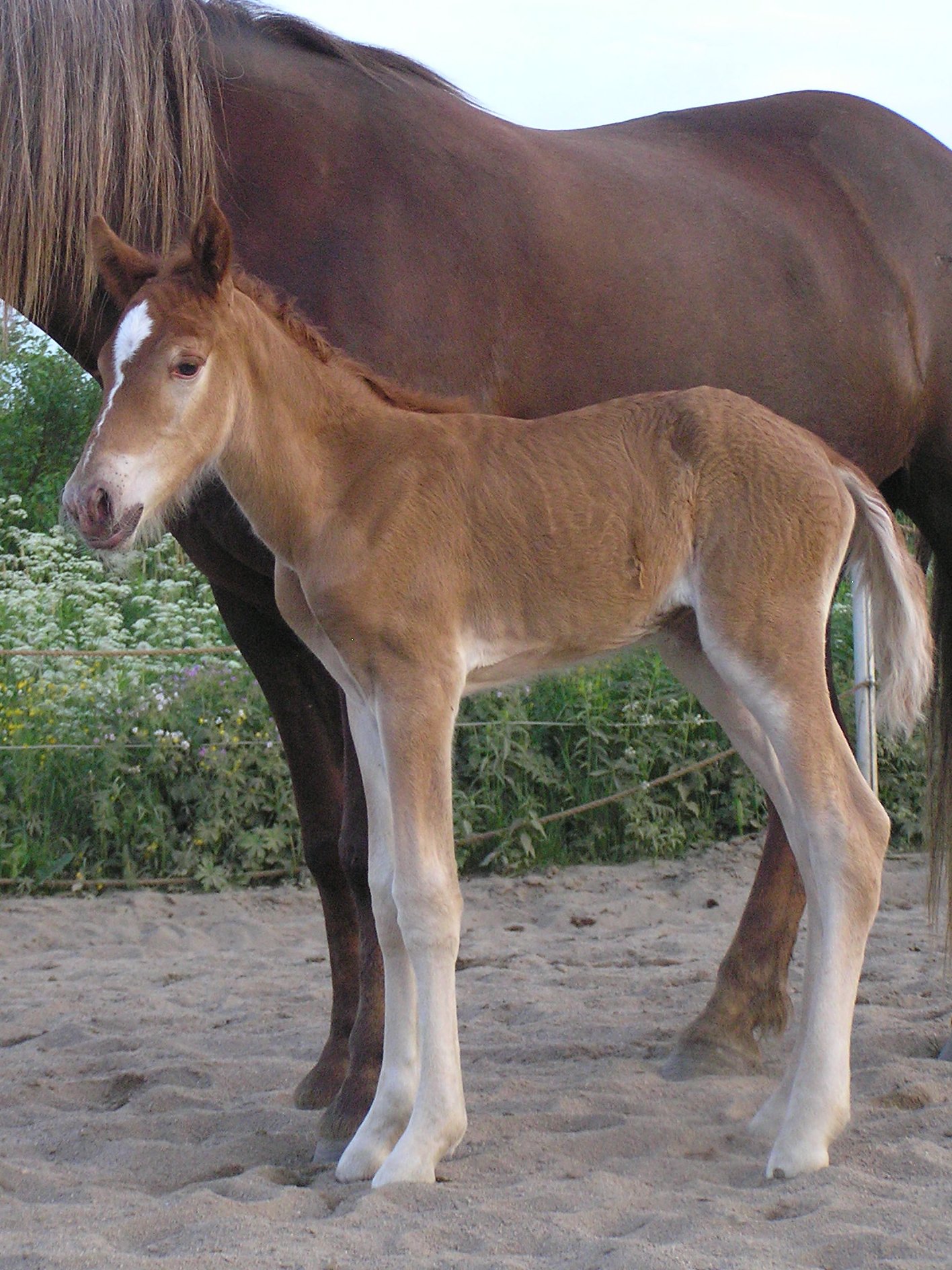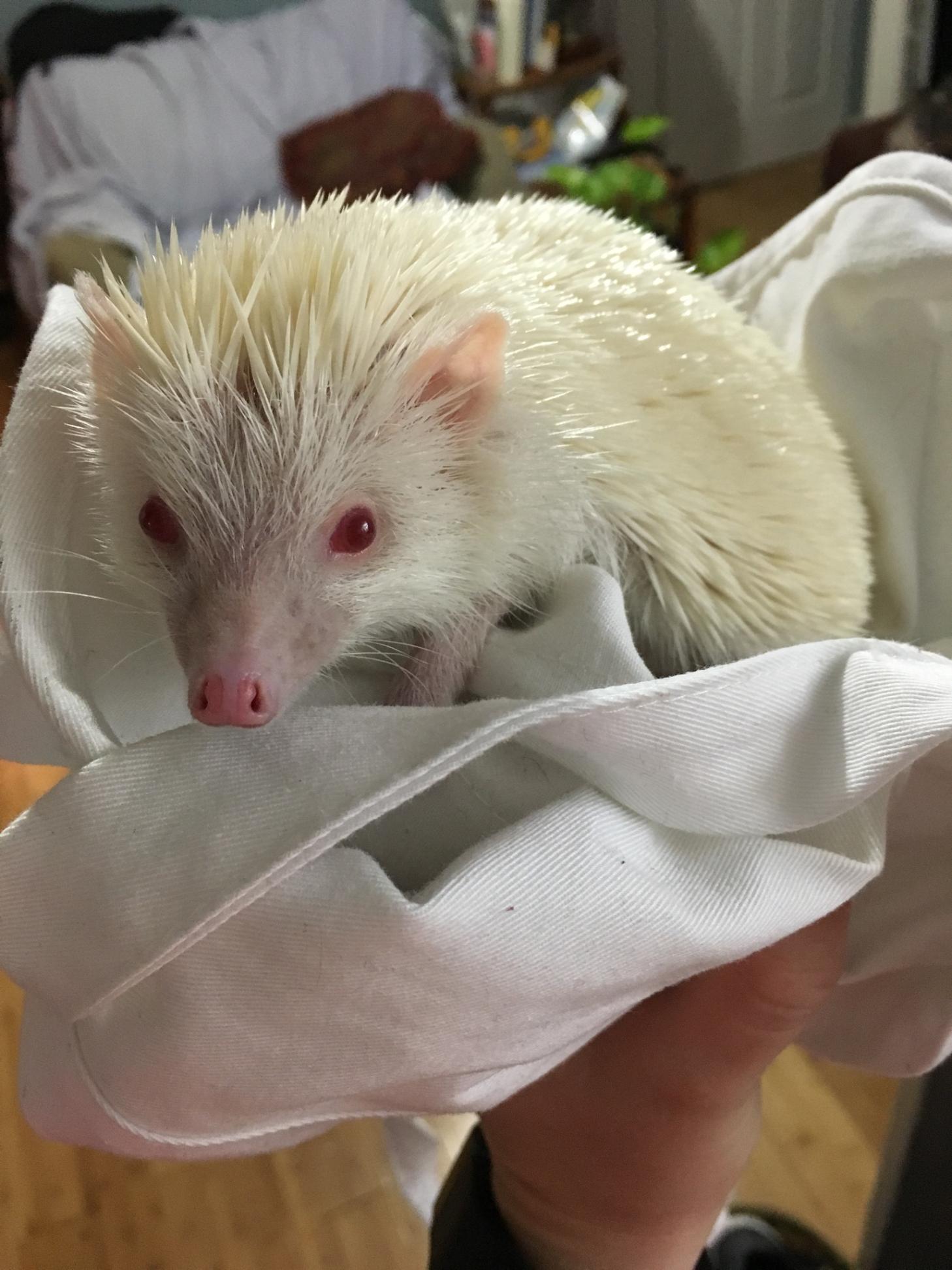|
Cremello
The cream gene is responsible for a number of horse coat colors. Horses that have the cream gene in addition to a base coat color that is chestnut will become palomino if they are heterozygous, having one copy of the cream gene, or cremello, if they are homozygous. Similarly, horses with a bay base coat and the cream gene will be buckskin or perlino. A black base coat with the cream gene becomes the not-always-recognized smoky black or a smoky cream. Cream horses, even those with blue eyes, are not white horses. Dilution coloring is also not related to any of the white spotting patterns. The cream gene (''CCr'') is an incomplete dominant allele with a distinct dosage effect. The DNA sequence responsible for the cream colors is the cream allele, which is at a specific locus on the solute carrier family 45 member 2 (''SLC45A2'') gene (previously known as ''MATP'' and ''OCA4'', among others). Its general effect is to lighten the coat, skin and eye colors. When one copy ... [...More Info...] [...Related Items...] OR: [Wikipedia] [Google] [Baidu] |
Palomino Horse
Palomino is a genetic color in horses, consisting of a gold coat and white mane and tail; the degree of whiteness can vary from bright white to yellow. The palomino color derived from the breeding of Spanish horses in the United States. Genetically, the palomino color is created by a single allele of a dilution gene called the cream gene working on a "red" (chestnut) base coat. Palomino is created by a genetic mechanism of incomplete dominance, hence it is not considered true-breeding. However, most color breed registries that record palomino horses were founded before equine coat color genetics were understood as well as they are today, therefore the standard definition of a palomino is based on the visible coat color, not heritability nor the underlying presence of the dilution gene. Due to their distinct color, palominos stand out in a show ring, and are much sought after as parade horses. They were particularly popular in movies and television during the 1940s and 1950s. ... [...More Info...] [...Related Items...] OR: [Wikipedia] [Google] [Baidu] |
Equine Coat Color
Horses exhibit a diverse array of coat colors and distinctive horse markings, markings. A specialized vocabulary has evolved to describe them. While most horses remain the same coat color throughout life, some undergo gradual color changes as they age. Most horse markings, white markings are present at birth, and the underlying skin color of a healthy horse does not change. Certain coat colors are also associated with specific breeds, such as the Friesian, which is almost exclusively black. The basic outline of equine coat color genetics has largely been resolved, and DNA tests to determine the likelihood that a horse will have offspring of a given color have been developed for some colors. Discussion, research, and even controversy continue about some of the details, particularly those surrounding spotting patterns, color sub-shades such as "sooty (gene), sooty" or "flaxen gene, flaxen", and horse markings, markings. Basic coat colors The two basic pigment colors of horse hair ... [...More Info...] [...Related Items...] OR: [Wikipedia] [Google] [Baidu] |
Chestnut (coat)
Chestnut is a hair coat color of horses consisting of a reddish-to-brown coat with a mane and tail the same or lighter in color than the coat. Chestnut is characterized by the absolute absence of true black hairs. It is one of the most common horse coat colors, seen in almost every breed of horse. Chestnut is a very common coat color but the wide range of shades can cause confusion. The lightest chestnuts may be mistaken for palominos, while the darkest shades can be so dark they appear black. Chestnuts have dark brown eyes and black skin, and typically are some shade of red or reddish brown. The mane, tail, and legs may be lighter or darker than the body coat, but unlike the bay they are never truly black. Like any other color of horse, chestnuts may have pink skin with white hair where there are white markings, and if such white markings include one or both eyes, the eyes may be blue. Chestnut foals may be born with pinkish skin, which darkens shortly afterwards. Chest ... [...More Info...] [...Related Items...] OR: [Wikipedia] [Google] [Baidu] |
Palomino
Palomino is a equine coat color, genetic color in horses, consisting of a gold coat and white mane (horse), mane and tail; the degree of whiteness can vary from bright white to yellow. The palomino color derived from the breeding of Spanish horses in the United States. Genetically, the palomino color is created by a single allele of a dilution gene called the cream gene working on a "red" (chestnut (coat), chestnut) base coat. Palomino is created by a genetic mechanism of incomplete dominance, hence it is not considered true-breeding. However, most color breed registries that record palomino horses were founded before equine coat color genetics were understood as well as they are today, therefore the standard definition of a palomino is based on the visible coat color, not heritability nor the underlying presence of the dilution gene. Due to their distinct color, palominos stand out in a show ring, and are much sought after as parade horses. They were particularly popular in m ... [...More Info...] [...Related Items...] OR: [Wikipedia] [Google] [Baidu] |
Equine Coat Colors
Horses exhibit a diverse array of coat colors and distinctive markings. A specialized vocabulary has evolved to describe them. While most horses remain the same coat color throughout life, some undergo gradual color changes as they age. Most white markings are present at birth, and the underlying skin color of a healthy horse does not change. Certain coat colors are also associated with specific breeds, such as the Friesian, which is almost exclusively black. The basic outline of equine coat color genetics has largely been resolved, and DNA tests to determine the likelihood that a horse will have offspring of a given color have been developed for some colors. Discussion, research, and even controversy continue about some of the details, particularly those surrounding spotting patterns, color sub-shades such as "sooty" or " flaxen", and markings. Basic coat colors The two basic pigment colors of horse hairs are pheomelanin ("red"), which produces a reddish brown color, and eume ... [...More Info...] [...Related Items...] OR: [Wikipedia] [Google] [Baidu] |
White (horse)
A white horse is born predominantly white and stays white throughout its life. A white horse has mostly pink skin under its hair coat, and may have brown, blue, or hazel eyes. "True white" horses, especially those that carry one of the dominant white (''W'') genes, are rare. Most horses that are commonly referred to as "white" are actually "gray" horses whose hair coats are completely white. Gray horses may be born of any color and their hairs gradually turn white as time goes by and take on a white appearance. Nearly all gray horses have dark skin, except under any white markings present at birth. Skin color is the most common method for an observer to distinguish between mature white and gray horses. True white horses White horses have unpigmented skin and a white hair coat. Many white horses have dark eyes, though some have blue eyes. In contrast to gray horses which are born with pigmented skin they keep for life and pigmented hair that lightens to white with age, truly wh ... [...More Info...] [...Related Items...] OR: [Wikipedia] [Google] [Baidu] |
Bay (horse)
Bay is a equine coat color, hair coat color of horses, characterized by a reddish-brown or brown body color with a black point coloration on the mane (horse), mane, tail (horse), tail, Pinna (anatomy), ear edges, and lower legs. Bay is one of the most common coat colors in many horse breeds. The black areas of a bay horse's hair coat are called "black points", and without them, a horse is not a bay horse. Black points may sometimes be covered by white horse markings, markings; however such markings do not alter a horse's classification as "bay". Bay horses have dark skin – except under white markings, where the skin is pink. Genetically, bay occurs when a horse carries both at least one dominant Agouti gene and at least one dominant Extension gene. While the basic genetics that create bay coloring are fairly simple, the genes themselves and the mechanisms that cause shade variations within the bay family are quite complex and, at times, disputed. The genetics of dark shades ... [...More Info...] [...Related Items...] OR: [Wikipedia] [Google] [Baidu] |
Champagne Gene
The champagne gene is a simple dominant allele responsible for a number of rare horse coat colors. The most distinctive traits of horses with the champagne gene are the hazel eyes and pinkish, freckled skin, which are bright blue and bright pink at birth, respectively. The coat color is also affected: any hairs that would have been red are gold, and any hairs that would have been black are chocolate brown. If a horse inherits the champagne gene from either or both parents, a coat that would otherwise be chestnut is instead gold champagne, with bay corresponding to amber champagne, seal brown to sable champagne, and black to classic champagne. A horse must have at least one champagne parent to inherit the champagne gene, for which there is now a DNA test. Unlike the genes underlying tobiano, dominant white, frame overo spotting and the Leopard complex common to the Appaloosa, the champagne gene does not affect the location of pigment-producing cells in the skin. Nor does the ... [...More Info...] [...Related Items...] OR: [Wikipedia] [Google] [Baidu] |
Dun Gene
The dun gene is a dilution gene that affects both red and black pigments in the equine coat color, coat color of a horse. The dun gene lightens most of the body while leaving the mane (horse), mane, tail, legs, and primitive markings the shade of the undiluted base coat color. A dun horse always has a dark dorsal stripe down the middle of its back, usually has a darker face and legs, and may have transverse striping across the shoulders or horizontal striping on the back of the forelegs. Body color depends on the underlying equine coat color genetics, coat color genetics. A classic "bay dun" is a gray-gold or tan, characterized by a body color ranging from sandy yellow to reddish brown. Duns with a chestnut (horse color), chestnut base may appear a light tan shade, and those with black horse, black base coloration are a smoky gray. Manes, tails, primitive markings, and other dark areas are usually the shade of the undiluted base coat color. The dun gene may interact with all other ... [...More Info...] [...Related Items...] OR: [Wikipedia] [Google] [Baidu] |
Albinism
Albinism is the congenital absence of melanin in an animal or plant resulting in white hair, feathers, scales and skin and reddish pink or blue eyes. Individuals with the condition are referred to as albinos. Varied use and interpretation of the terms mean that written reports of albinistic animals can be difficult to verify. Albinism can reduce the survivability of an animal; for example, it has been suggested that albino alligators have an average survival span of only 24 hours due to the lack of protection from UV radiation and their lack of camouflage to avoid predators. It is a common misconception that all albino animals have characteristic pink or red eyes (resulting from the lack of pigment in the Iris (anatomy), iris allowing the blood vessels of the retina to be visible); this is not the case for some forms of albinism. Familiar albino animals include in-bred strains of laboratory animals (rats, mice and rabbits), but populations of naturally occurring albino animals ... [...More Info...] [...Related Items...] OR: [Wikipedia] [Google] [Baidu] |









